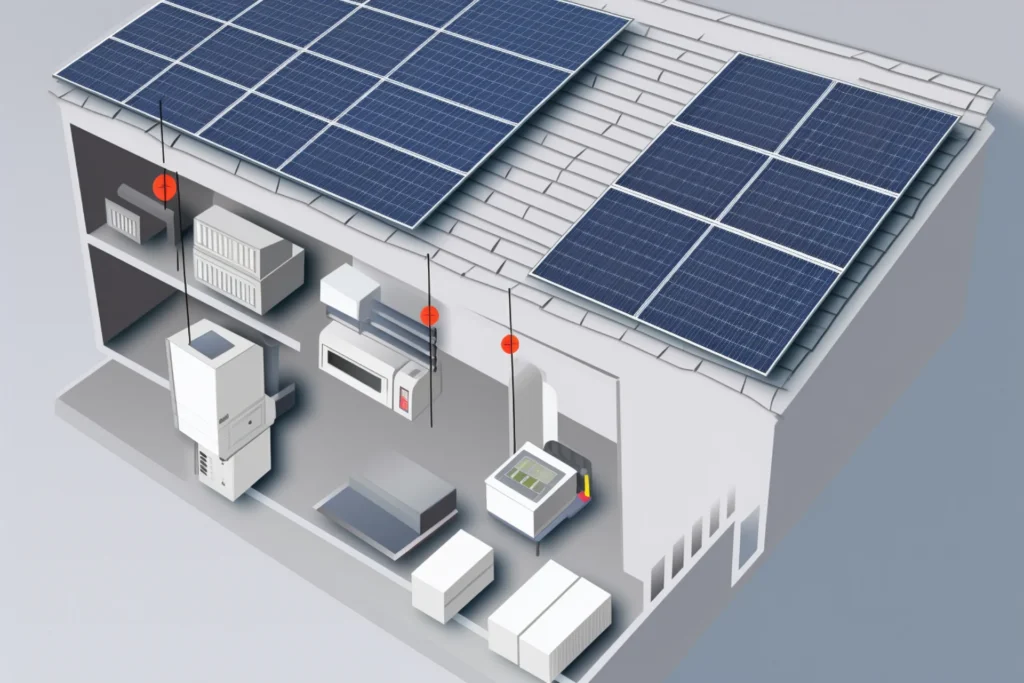
Solar panel systems have become increasingly popular for residential and commercial use as the world becomes more reliant on renewable energy sources. These systems offer a clean and sustainable source of electricity, but they also come with challenges. One of the biggest challenges is ensuring backup power is available in case of an outage or emergency.
Several backup power options are available for solar panel systems, each with advantages and disadvantages. Some options, such as battery backup systems and generators, are more traditional solutions that have been used for decades. Others, such as fuel cells and flywheels, are newer technologies that offer unique benefits. In this article, we will explore the different types of backup power options available for solar panel systems so you can decide which one is right for your needs.
The introduction section of this discourse highlights the necessity for alternative energy sources to provide an uninterrupted and reliable electricity supply. Solar panel systems have become increasingly popular as a renewable energy source, especially in areas that receive adequate sunlight throughout the year. However, solar panels do not always guarantee a constant flow of electricity due to their reliance on weather conditions, and this is where backup power options come into play.
Reliability is an important factor to consider when investing in a solar panel system. A reliable backup power option ensures no electricity supply disruption, even during unfavorable weather conditions or other disruptions such as power outages. Therefore, it is essential to invest in backup power options to store excess energy generated by the solar panel system and release it when needed.
Weather conditions can significantly impact the performance of solar panels and consequently affect their ability to generate energy efficiently. For instance, excessive cloud cover or snowfall can obstruct sunlight from reaching the panels, decreasing their effectiveness. Backup power options help mitigate these drawbacks by providing alternative methods of generating electricity during unfavorable weather conditions.
In conclusion, ensuring uninterrupted access to electricity is crucial for both residential and commercial settings. While investing in solar panel systems offers an eco-friendly way to harness renewable energy, backup power options are necessary for overcoming issues related to reliability and adverse weather conditions. It’s important to research various types of available backup power options to choose one that best fits individual needs and requirements based on location, budget constraints, and other factors.
Battery backup systems offer a reliable and effective means of storing excess energy generated by solar panels for use during periods of low sunlight or power outages. Installing such systems typically involves connecting the batteries to the inverter, which is responsible for converting direct current (DC) into alternating current (AC) that can be used to power household appliances. Depending on the size of the system, multiple batteries may be required to provide sufficient backup power.
Maintaining battery backup systems requires regular monitoring and testing to ensure they remain functional. This includes performing routine checks on battery charge levels and replacing damaged or worn components as necessary. Keeping the batteries clean and debris-free is also important, as this can affect their performance over time.
Several options are available when choosing a battery backup system for your solar panel installation. Here are four common types:
Overall, incorporating a battery backup system into your solar panel installation can provide peace of mind in case of power outages or low sunlight periods. However, it’s important to carefully consider which type of battery best suits your needs based on cost, lifespan, and maintenance requirements. Additionally, proper installation procedures should be followed to ensure optimal functionality over time.
Generators can provide an additional source of electricity for residential or commercial buildings during extended power outages. They come in two main types: portable and stationary. Portable generators are relatively small, can easily move around, and do not require professional installation. However, they have limitations on how much power they can produce and how long they can run without refueling. On the other hand, stationary generators are larger and more powerful than portable ones but require permanent installation by a professional.
The fuel type used to power generators varies depending on their size and purpose. Smaller portable generators typically use gasoline, while larger stationary ones may use propane or natural gas. The choice of fuel type depends on factors such as availability, cost, and environmental impact.
Portable generators are particularly useful in situations where mobility is required, such as outdoor activities or construction sites but less so for backup power during extended power outages due to their limited capacity for fuel storage and shorter lifespan compared to stationary units. Stationary generators offer a more reliable backup option since they have a greater capacity for fuel storage (sometimes connected directly to a home’s natural gas supply) and often include features like an automatic start-up when the primary electrical source fails.
In conclusion, generators are an important backup power option for solar panel systems that offer peace of mind during extended periods of a power outage, especially if you live in areas prone to frequent blackouts caused by weather events or other disasters. Choosing between portable vs. stationary generators will depend upon your specific needs, including portability requirements, available space/storage options, and budget considerations relating to purchase price/ongoing maintenance costs associated with each unit type over time. Finally, whatever type you choose, it is important always take proper safety precautions when operating any generator, including keeping them away from flammable materials/ventilation sources while running them outside only in well-ventilated areas clear from obstructions that could cause accidents or injuries.
Hybrid systems are a combination of battery backup and generators, providing an alternative power source when solar panels cannot meet the energy demands. The advantages of hybrid systems include increased reliability, reduced costs, and improved efficiency. However, there are also disadvantages, such as higher upfront costs, maintenance requirements, and potential noise pollution from generators.
Integrating a battery backup and generator is a popular option for solar panel systems as it ensures a reliable source of electricity during power outages or grid failures. This hybrid system combines the benefits of both technologies, providing an uninterrupted power supply to homes or businesses. The battery backup stores excess energy generated by the solar panels during the day and releases it when needed, while the generator acts as a backup source in case there is not enough stored energy to meet demand.
When choosing a generator for this system, one should consider fuel types such as diesel, gasoline, propane, or natural gas. Diesel generators are known for their durability and long lifespan, while propane and natural gas generators are more efficient and produce fewer emissions than gasoline-powered ones. Also, proper management of battery lifespan is crucial to ensuring optimal hybrid system performance. Regular maintenance checks on the battery backup and generator can help extend their lifespans, reducing overall costs in the long run.
In considering the pros and cons of combining battery storage with a generator, evaluating the cost-effectiveness and practicality of such integration is important. One advantage of this combination is that it provides a more reliable backup power source for homeowners who live in areas with frequent power outages or natural disasters. The battery storage can provide power during short-term outages or periods of peak demand when utility rates are high. At the same time, the generator can be used as a backup during long-term outages or when the battery is depleted.
However, there are also limitations to this approach:
Ultimately, whether combining battery storage with a generator is suitable for a homeowner depends on their priorities and circumstances.
Fuel cells offer a promising alternative to traditional energy storage methods in solar systems, as they can provide reliable and efficient backup power without relying on fossil fuels. Fuel cell technology involves the conversion of hydrogen fuel into electrical energy through an electrochemical process, producing only water and heat as byproducts. This makes them highly sustainable and eco-friendly backup power sources for solar systems.
The future advancements in fuel cell technology are exciting. With research and development ongoing, there is potential for increased efficiency, durability, and cost-effectiveness. One area of focus is solid oxide fuel cells (SOFCs), which operate at higher temperatures than traditional fuel cells and can utilize a wider range of fuels, such as natural gas or biogas.
Another advantage of fuel cells is their scalability, and they can be used for small residential systems or large commercial installations, providing flexibility in meeting various energy demands. In addition, unlike batteries that have limited lifespans before needing replacement, fuel cells have longer lifetimes with periodic maintenance.
In conclusion, fuel cell technology holds great promise as a backup power option for solar systems due to its sustainability, efficiency, scalability, and potential for future advancements. As we search for sustainable alternatives to traditional fossil-fuel-based energy sources, integrating solar panels with fuel cells offers an innovative solution that could contribute significantly towards achieving our clean energy goals while providing us with greater freedom from dependence on conventional sources of electricity.
Fuel cells have been a popular option for backup power in solar panel systems because they provide longer-lasting energy. However, other technologies are emerging as viable alternatives, such as flywheels. Flywheel technology relies on the principle of rotational energy storage, where kinetic energy is stored in a spinning rotor and then converted back into electricity when needed.
In recent years, significant advancements have been made in flywheel technology, making it a more reliable and efficient option for backup power. One of the advantages of flywheels over fuel cells is their ability to operate at high speeds without experiencing wear and tear. They also don’t require any chemicals or fuels to function, making them more environmentally friendly.
Flywheels are also being compared to battery backup systems which have long been popular for storing solar-generated electricity. While batteries can store large amounts of energy, they tend to degrade over time and may need replacement after a few years. On the other hand, flywheels offer unlimited cycles without any degradation.
Furthermore, flywheel technology has proven capable of providing instant response times during sudden power outages or grid failures while maintaining stability throughout its operation. This feature makes it an attractive solution for home-based solar systems and industrial applications requiring reliable backup power sources.
As we continue our quest towards sustainable living through renewable energy solutions like solar panels, we must explore all available options for backup power systems. With continued advancements in flywheel technology and its potential advantages over other technologies like fuel cells and batteries, it could very well emerge as the preferred choice for many consumers seeking freedom from traditional fossil fuel-based energy sources.
Capacitors are an emerging technology with promise as a viable solution for storing and releasing energy in renewable energy systems. Capacitor technology is similar to battery storage, but the former has faster charging and discharging capabilities than the latter. This feature makes capacitors ideal for short-term backup power during grid outages or when solar panels cannot generate enough electricity to meet demand.
Capacitor technology is not new, but its application in renewable energy systems is still in its infancy. However, recent developments have shown that capacitors can be integrated with solar panel systems to store excess electricity generated during peak hours and release it during off-peak hours or when no sun is available. Moreover, capacitor technology does not require toxic chemicals like batteries, making it environmentally friendly.
One of the main advantages of using capacitor technology for energy storage is its high-efficiency rate. Unlike batteries that lose their charge over time due to resistance losses, capacitors can maintain their charge for longer periods without losing energy due to resistance losses. Additionally, capacitors can operate at higher temperatures than batteries without degrading their performance levels.
Despite these advantages, some limitations are still associated with using capacitor technology for backup power options in solar panel systems. Firstly, although capacitors have faster charging and discharging capabilities than batteries, they cannot hold as much energy as them; hence they would only be useful for short-term backup power solutions. Secondly, the cost of producing large-scale capacitor-based energy storage systems is still relatively high compared to battery-based ones.
In conclusion, capacitor technology holds great potential as a promising alternative option for storing and releasing electrical energy in renewable energy systems such as solar panel installations. Despite being a relatively innovation in this field, it offers several benefits, such as high-efficiency rates and eco-friendliness compared to traditional battery storage methods. Nonetheless, further research and development are necessary before widespread implementation on a larger scale becomes affordable.
In evaluating backup power options for a solar panel system, it is important to consider three key factors: cost, efficiency, and environmental impact. Cost refers to the initial investment in the backup power option, ongoing maintenance costs, and potential savings from using renewable energy sources. Efficiency relates to how well the backup power option converts stored energy into usable electricity, while environmental impact considers factors such as carbon emissions and resource depletion. We can decide which backup power options suit our needs and values by examining these factors.
The financial investment required for implementing a backup power solution in conjunction with a solar energy setup is an important consideration that may influence the decision-making process of potential adopters. While solar panels are becoming more affordable, adding backup power options can be costly. There are several factors to consider when calculating the cost of a backup power system, including the size and capacity needed, installation expenses, and ongoing maintenance costs.
Cost considerations can vary depending on the type of backup power option chosen. Battery storage systems are often considered one of the most expensive but reliable options for homeowners. These systems typically require an upfront investment ranging from $5,000 to $15,000, depending on the size and capacity needed. However, they offer long-term savings by allowing homeowners to use stored energy during peak demand times or in case of emergencies. Overall, return on investment should also be considered when deciding which type of backup power option.
Efficiency considerations are essential when selecting a backup power option for a solar panel system. The efficiency of the storage solution determines how much energy can be stored and used during periods of low sunlight or power outages. One of the most efficient backup power options available is lithium-ion batteries, which have a high energy density and can store more energy in less space than other battery types. Additionally, they have a longer lifespan and require minimal maintenance compared to lead-acid batteries.
Maintenance requirements are another crucial factor when selecting an efficient backup power option for a solar panel system. Some battery types require regular maintenance, such as topping up water levels or equalizing charges, which can be time-consuming and costly. Lithium-ion batteries, however, require little to no maintenance and have a self-discharge rate significantly lower than other battery types. This means they can retain their charge for longer periods without needing to be recharged regularly. Considering both efficiency and maintenance requirements is critical when selecting an optimal backup power option for your solar panel system.
Assessing the environmental impact of energy storage solutions is crucial when considering sustainable alternatives for renewable energy sources. Solar panel systems are popular for homeowners and businesses looking to reduce their carbon footprint. Still, it’s also important to consider the environmental impact of backup power options. Here are some sustainability solutions to consider:
Overall, while various backup power options are available with solar panel systems, it’s important to weigh their environmental impact against their benefits in terms of reliability and efficiency. By choosing sustainable alternatives for backup power, we can ensure that our efforts towards renewable energy sources aren’t negated by harmful practices elsewhere.
In conclusion, assessing the environmental impact of backup power options is essential when considering sustainable alternatives for renewable energy sources like solar panels. Sustainability solutions such as battery storage, hydrogen fuel cells, and flywheels offer varying eco-friendliness and efficiency depending on individual needs and budgets. As we strive towards reducing our carbon footprint through renewable energy sources like solar panels, it’s equally important that we choose environmentally responsible methods for storing excess energy generated by these systems.
In light of the considerations mentioned above, it is recommended that a comprehensive evaluation of supplementary energy storage solutions be conducted to ensure optimal performance and reliability of the solar energy system. While solar panels are an excellent renewable energy source, they require backup power sources when there is no sunlight or during power outages. The choice of backup power options depends on various factors such as cost, availability, sustainability considerations, and capacity requirements.
One option is battery storage systems which store excess electricity generated by the solar panels during peak hours for use later. Battery storage systems can provide reliable backup power for several hours depending on capacity and increase self-sufficiency by reducing reliance on grid electricity. However, batteries have a limited lifespan and must be replaced periodically, which should be factored into the overall cost analysis.
Another option is generator sets which use fossil fuels to generate electricity when there is no sunlight or during prolonged power outages. While generator sets are relatively cheap and readily available in many areas, they emit harmful pollutants into the environment, which can contribute to climate change and pose health risks. Therefore, if sustainability considerations are important, alternative options such as battery storage systems or hybrid generators that combine solar panels with propane or natural gas generators should be considered.
In conclusion, choosing a backup power option requires careful consideration based on various factors such as cost-effectiveness, availability, sustainability considerations, and capacity requirements. While battery storage systems offer reliable backup power without emitting pollution into the environment, they may require periodic replacement due to their limited lifespan. On the other hand, generator sets are cheaper but have negative environmental impacts that should not be ignored. Overall it’s essential to evaluate each option carefully before making a decision that ensures optimal performance and reliability of the solar panel system while minimizing environmental impact.
Backup Power Option | Pros | Cons |
Battery Storage Systems | Reliable; sustainable; reduce reliance on grid electricity | Limited lifespan; periodic replacement |
Generator Sets | Cheap; readily available | Pollute the environment; negative environmental impact |
Hybrid Generators (solar panels + propane or natural gas generators) | Reliable backup power; sustainable; reduce reliance on grid electricity | Higher cost than generator sets alone. |
In conclusion, backup power options are essential when implementing a solar panel system. Battery backup systems are the most commonly used option, providing a reliable and consistent power supply during outages. Generators are another popular choice due to their ability to quickly generate large amounts of power, but they require fuel for operation. Hybrid systems offer the benefits of both battery backups and generators while minimizing their drawbacks.
Fuel cells, flywheels, and capacitors also provide backup power options, each with unique advantages and disadvantages. Fuel cells offer long-lasting power without fuel, but they may be expensive to install and maintain. Flywheels have relatively low maintenance costs but can only support short-term outages. Capacitors are suitable for providing quick bursts of energy but cannot sustain prolonged outages.
Ultimately, the choice of which backup power option to use depends on various factors such as cost, reliability, efficiency, and environmental impact, among others. Therefore it is crucial to conduct thorough research before deciding on a suitable option that meets specific needs and requirements. With proper planning and implementation of a backup power system, solar panel users can ensure uninterrupted access to electricity, even during emergencies or grid failures.
During a power outage, a solar panel system’s backup power capacity and battery lifespan are crucial factors in determining how long it can last. The backup power capacity refers to the energy stored in the batteries during an outage. This capacity varies depending on the size and type of batteries used in the system. Battery lifespan, however, refers to how long the batteries can hold their charge before needing replacement. This is affected by usage patterns, temperature, and maintenance practices. A well-designed solar panel system with adequate backup power capacity and properly maintained batteries can provide reliable power during an outage for several hours or even days, depending on the household’s energy demands.
The cost of installing backup power options for a solar panel system can vary depending on several factors, including the size of the system and the type of batteries used. Installation expenses can range from a few hundred dollars to several thousand dollars. However, financing options such as loans or leasing programs can help offset these costs and make it more affordable for homeowners. It is important to consider the long-term benefits of having backup power options, such as increased energy independence and potential savings on electricity bills during power outages. Overall, investing in backup power options for a solar panel system may require an initial investment but can provide peace of mind and financial benefits in the long run.
The integration feasibility of backup power options to an existing solar panel system depends on various factors such as the type and capacity of the solar panels, inverter, and battery. Compatibility issues may arise if the backup power option is not compatible with the existing components of the solar panel system. It is important to consult a professional installer to assess whether adding a backup power option is feasible and compatible with your current setup. While it may be possible to add a backup power option, it is crucial to ensure that it does not compromise the efficiency and performance of your solar panel system. Ultimately, integrating a backup power option can provide additional security and freedom during power outages or emergencies.
Maintaining backup power options for a solar panel system is crucial to ensure that the system operates efficiently and remains reliable. The frequency of maintenance depends on various factors, including the type and size of the backup power systems and environmental conditions. In general, it is recommended that backup batteries be checked every 6-12 months to ensure their proper function. Regular maintenance can prevent costly replacements in the long run. However, when a replacement is necessary, costs will vary depending on the new battery’s type and capacity. Therefore, it is essential to consider purchasing costs, maintenance frequency, and replacement costs when selecting a solar panel system with backup power options. By doing so, users can enjoy an uninterrupted power supply and experience true freedom from conventional energy sources.
Government incentives and tax credits are available for those who install backup power options for a solar panel system. These incentives vary by location and may include federal, state, or local programs. For example, the Investment Tax Credit (ITC) is a federal incentive that provides a credit of up to 26% of the cost of installing backup power options with a solar panel system. Additionally, some states offer incentives such as rebates or performance-based incentives. It is important to research the specific programs available in your area and consult with a professional installer to ensure eligibility and compliance with regulations. Taking advantage of government incentives and tax credits can make it more affordable for individuals to invest in backup power options for their solar panel systems, ultimately providing greater energy independence and security.
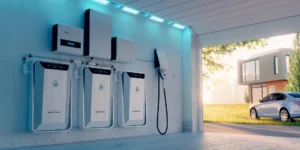
What Is The Expected Lifespan Of Batteries In A Residential Solar System? Overview of Residential Solar Systems Residential solar systems have gained popularity in recent
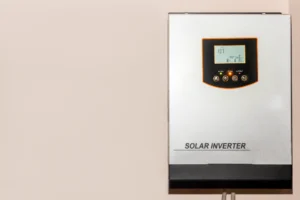
Difference Between String And Microinverters In A Solar Panel System? The world is gradually shifting towards renewable energy sources, with solar panel systems being one

How Do I Choose The Right Solar Panel Manufacturer? As the world becomes more environmentally conscious, many individuals are turning towards solar energy to reduce
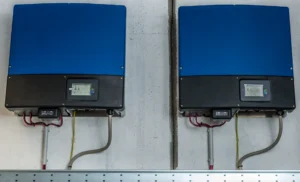
How Do I Choose The Right Inverter For My Solar Panels System? Choosing the right inverter for your solar panel system is a crucial decision
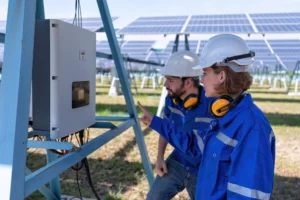
What Is The Expected Lifespan Of A Solar Inverter? Solar energy is becoming increasingly popular as a source of renewable energy. With the rise in
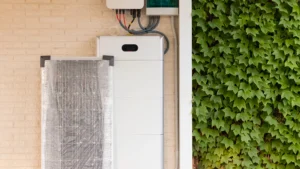
Understanding The Main Components Of A Solar Panel System As concerns about climate change and the environment continue to rise, solar power systems with photovoltaic